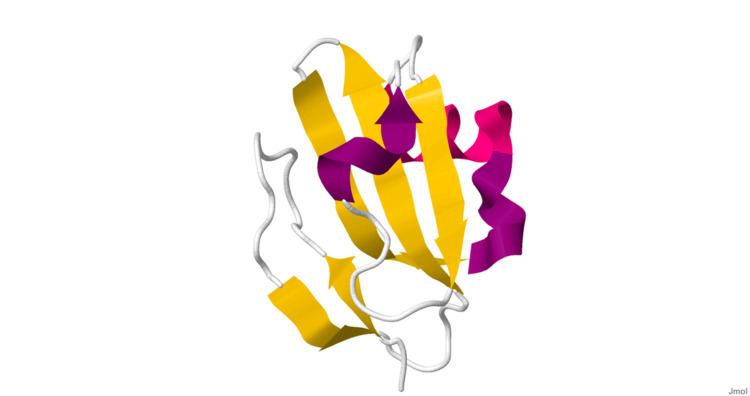Symbol UPAR_LY6 InterPro IPR001526 SCOP 1erg | Pfam PF00021 PROSITE PDOC00756 SUPERFAMILY 1erg | |
 | ||
CD59 antigen (also called 1F-5Ag, H19, HRF20, MACIF, MIRL, P-18 or protectin) inhibits formation of membrane attack complex (MAC), thus protecting cells from complement-mediated lysis. It has a signaling role, as a GPI anchored molecule, in T cell activation and appears to have some role in cell adhesion through CD2 (controversial). CD59 associates with C9, inhibiting incorporation into C5b-8 preventing terminal steps in polymerization of the (MAC) in plasma membranes. Genetic defects in GPI-anchor attachment that cause a reduction or loss of both CD59 and CD55 on erythrocytes produce the symptoms of the disease paroxysmal nocturnal hemoglobinuria (PNH).
Contents
A variety of GPI-linked cell-surface glycoproteins are composed of one or more copies of a conserved domain of about 100 amino-acid residues. Among these proteins, U-PAR contains three tandem copies of the domain, while all the others are made up of a single domain.
As shown in the following schematic, this conserved domain contains 10 cysteine residues involved in five disulfide bonds - in U-PAR, the first copy of the domain lacks the fourth disulfide bond.
+------+ +------------------------+ +---+ | | | | | | xCxxCxxxxxxCxxxxxCxxxxxCxxxxxxxxxxxxxxxxxxCxxxxCxxxxxxxxxxxxxxCCxxxCxxxxxxxx | | | | +---------------------+ +--------------+'C': conserved cysteine involved in a disulfide bond.
CD molecules are leucocyte antigens on cell surfaces. CD antigens nomenclature is updated at Protein Reviews On The Web (http://mpr.nci.nih.gov/prow/).
Subfamilies
Human proteins containing this domain
ARS; CD177; CD59; LY6D; LY6E; LY6H; LYNX1; LYPD2; LYPD3; LYPD4; LYPD5; LYPD6; PLAUR; PSCA; SLURP2; SLURP1; SPACA4; TEX101;
